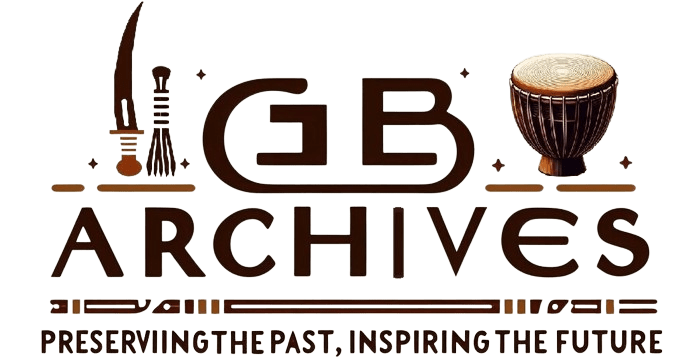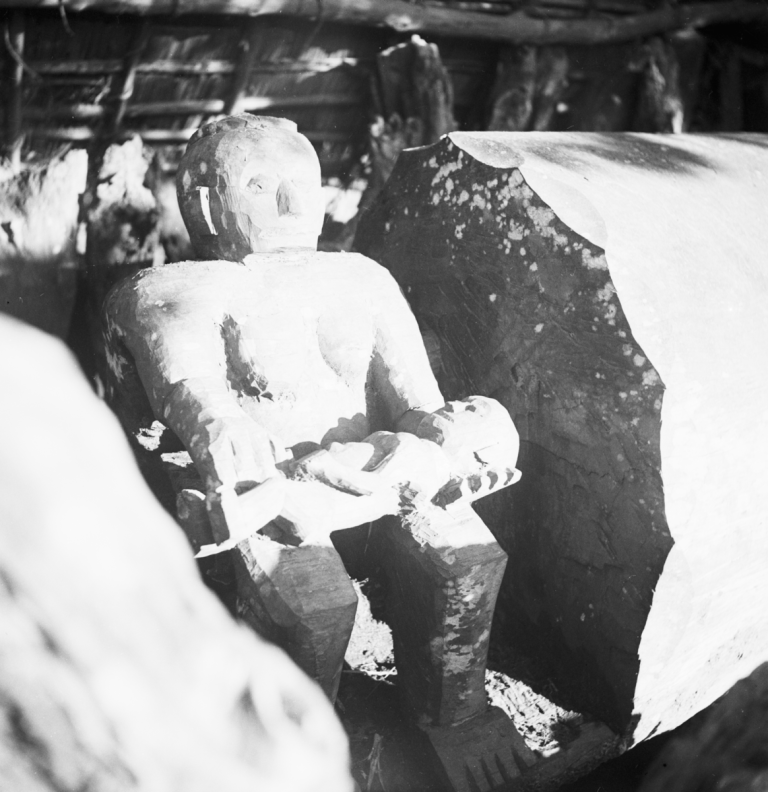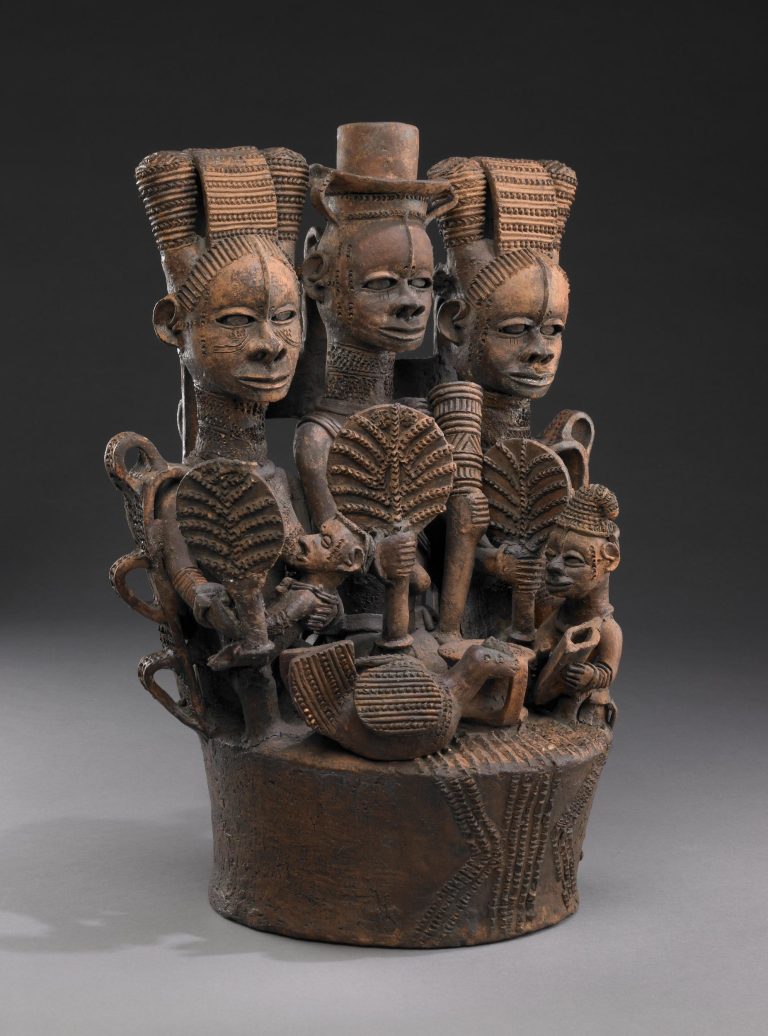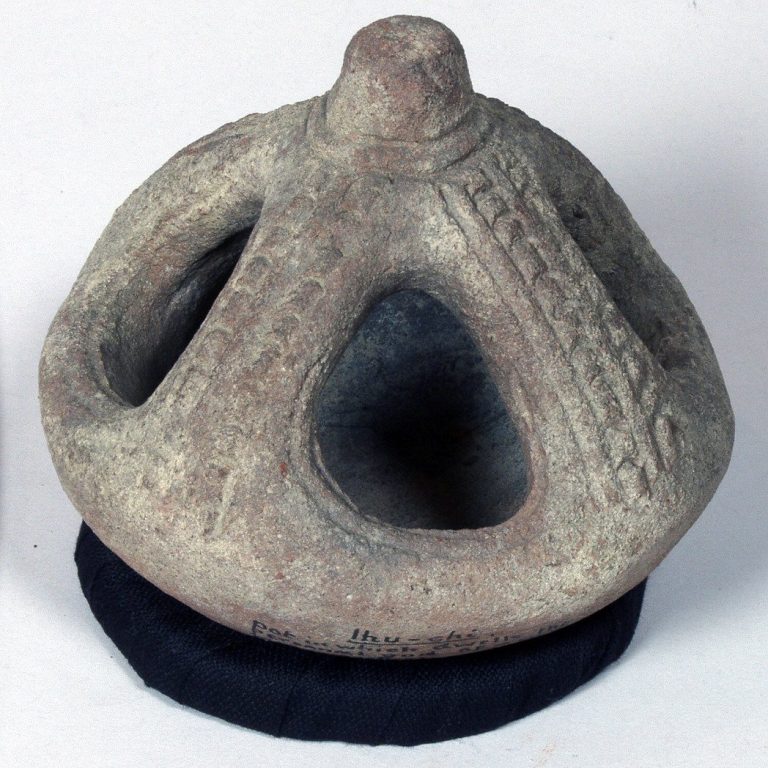
This black and white photograph, taken by G.I. Jones in the 1930s, showcases five intricately carved wooden figures representing Igbo ancestral figures. These figures are placed within an obi, in Ohafia. The photograph is part of the Jones Archive at Southern Illinois University.
The figures vary in height and are adorned with different patterns and designs, likely signifying their statuses or roles within the society. Some figures have their arms by their sides, while others hold objects. One figure is seated on a stool with a smaller figure beside it, possibly indicating a status of authority or reverence. This image provides a visual representation of Igbo cultural heritage from the early 20th century, highlighting the artistry and significance of ancestral figures in Ohafia’s matrilineal society.
The Unique Matrilineal Tradition of Ohafia
Ohafia is notable within Igbo culture for its matrilineal system, a unique inheritance structure where lineage and property pass through the maternal line. This societal feature stands in contrast to the predominantly patrilineal traditions in other Igbo communities.
Historical Origins of Matriliny in Ohafia
In Ohafia: A Matrilineal Ibo People (1974), Philip O. Nsugbe explores the historical roots of Ohafia’s matrilineal tradition. He recounts an intriguing theory about the group’s migrations:
“During these migrations, pregnant women who were unable to continue might have been left behind in the care of a brother or husband. These women became the founders of new Ohafia settlements.”
This account highlights the potential origins of Ohafia’s unique social structure and the significant roles played by women.
The Role of Twins in Ohafia Culture
Nsugbe also links the practice of leaving women behind to cultural beliefs about twins, who were sometimes considered taboo. This aligns with traditions in certain Ohafia villages that trace their lineage to female founders.
Women’s Roles in Ohafia Society
Ohafia’s matrilineal system underscores women’s prominent roles in community development. Nsugbe writes:
“Traditions acknowledge and even ritually rehearse from year to year the significant part women played in founding villages and lineage groups.”
This system extends to leadership, as seen in the Ekeuke royal family and other prominent lineages in Ebem Ohafia. Positions of influence and authority in these groups often pass through the maternal line, ensuring continuity of female leadership.
The Spiritual and Social Significance of Ancestral Figures
The carved wooden figures featured in Jones’s photograph reflect the deeply spiritual relationship between the living and their ancestors. Positioned within the obi, these ancestral symbols served as intermediaries between the physical and spiritual worlds. Nsugbe notes:
“The obi was the primary space where the spirits of the ancestors were invoked, offering guidance and protection to their descendants.”
Each figure’s unique attributes likely symbolized specific roles or achievements of the ancestors they represented. Rituals performed in the obi aimed to honor these spirits, maintaining a sacred bond across generations.
Preserving Igbo Cultural Heritage
G.I. Jones’s work, including this photograph, offers invaluable documentation of Igbo traditions and artistry during the colonial era. While many ancestral practices have been disrupted by external influences, these visual archives provide a crucial link to the past, ensuring that such cultural treasures are not lost.
Further research into oral histories, archaeological evidence, and documented traditions can help deepen our understanding of Ohafia’s matrilineal heritage and its role in shaping Igbo identity.
Join the Conversation
What are your thoughts on the matrilineal traditions of Ohafia or the significance of ancestral figures in Igbo culture? Share your insights in the comments below!
References
- Nsugbe, Philip O. Ohafia: A Matrilineal Ibo People. Oxford Monographs on Social Anthropology. Oxford: Oxford University Press, 1974. See our review below.
- Jones, G.I. The Art of Eastern Nigeria. Southern Illinois University Press, 1984. See our review below.
Discover more from Igbo Archives
Subscribe to get the latest posts sent to your email.
